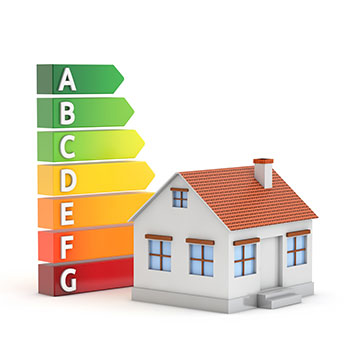



Sustainable houses are based on the principle of sustainable development guided by the idea that all of your needs should be fulfilled so that they don’t endanger the benefits of upcoming generations.
Why sustainable construction?
Our energy consumption is increasing on a daily basis. Thoughtless, inefficient energy use causes a needlessly large energy production and therefore causes an unnecessarily large adverse influence on the environment.
The building energy rating is the number stating the yearly consumption of energy based on a unit of heated surface and it is portrayed in kWh/m2. The lower the amount, the better the heat protection. A typical building energy ratings are usually 0 to 30 kWh/m2 for an energy efficient house and over 200 kWh/m2 for energy inefficient buildings.

There are a few different categories of energy efficient houses: low-energy, passive and zero energy houses
The yearly need for heating a low-energy house is 20-40 kWh/m2. To be able to achieve that, those houses have good insulation, energy efficient windows and low air flows. Low-energy houses are also called “three-liter houses”, named after the fact that they use around 3L of oil per m2 a year for heating.
Yearly heating needs of a passive house are around 15 kWh/m2 or less and the overall energy needs for heating, warm water and electricity are less than 40 kWh/m2. A passive house has controlled ventilation system with recuperation of the air, heat and solar energy transformations.
A house with zero nett energy consumption and zero nett emission of carbon-dioxide is called a zero energy house.
Such houses can be fully independent of public energy networks. However, in reality, during winter those houses do receive some energy from city energy grids and during the summer months excess energy is returned to the grid. This evens out the energy balance sheet. Also, these houses don’t have a traditional heating system but rather use solar energy actively and passively.

Almost 50% of all energy needs in a home falls to the heating system. When building sustainably we can achieve bigger savings in all energy types, particularly heat and electricity without lowering our comfort. This is why building sustainably is a key factor in modern housing.
More than ⅕ of electrical energy within a typical household is used for saving food. What we choose as a refrigerator and/or cooler is very important as those types of appliances are running 24 hours a day so how much they use up is immediately reflected in your budget and monthly expenses. In addition to keeping track of how much energy they use, it is also important to note how much volume you actually need, so keep in mind not to buy too small or too big of an appliance. In both freezers and refrigerators temperatures should be set to the optimal level (– 7 °C for refrigerators and – 18 °C for freezers) so that there is no need for extra energy to keep all of the food and beverage items fresh.
For energy rational and efficient use of dishwasher and washing machines it is important that they be optimally filled as well to use proper washing programs. Instead of using an electrical dryer, you can choose to air dry your laundry. The biggest part of electrical energy is used to heat up water and dry out clothes, so when you try to avoid unnecessary extra heating you can save up a lot of energy
In order to reduce energy consumption for electricity, particularly in terms of room cooling, it is advised to maintain an optimal room temperature. Those temperatures depend on the type of the room - for ex. 20 degrees Celsius for living room and classroom , while 24 degrees is recommended for bathrooms.
Fluorescent lightbulbs ("neon tubes") are made from a glass tube lined with phosphor. The tube contains inert gas with a very small amount of mercury. Fluorocompact lightbulbs are bent fluorescent tubes with an inert muffler.
LED lights are now being increasingly used as a substitute for a classic lightbulb, as they use up less energy and last longer than the bulbs that have a tungsten filament.
Day light reduces the need for using artificial lights and by doing so allows for significant energy savings. This is why it’s important to reduce the use of indoor lights and opt for daylight whenever possible. Apart from lowering our electricity bill, daylight is important for our health as well.
There are a lot of reasons why we should use sun energy as much as possible.
Kitchen has a lot of appliances that need a lot of energy and all of them are used daily. Apart from the dishwasher and the refrigerator, these large energy users also include the stove and kitchen hood. This is why we need to be mindful when purchasing those elements as by selecting appliances with a higher energy class, we can save a lot more.
One of the ways to use the stove rationally is to select a heating area that matches the size of the pot used – it shouldn't be larger, or smaller than the pot bottom. By doing so energy isn’t radiated around nor does it take longer to cook.